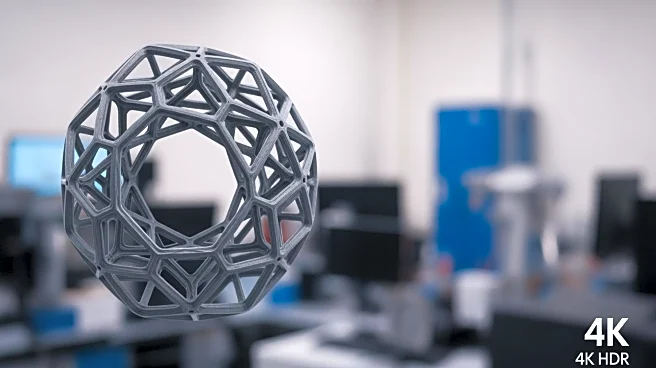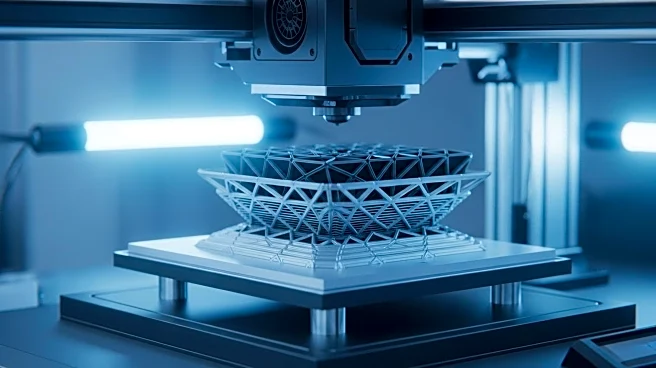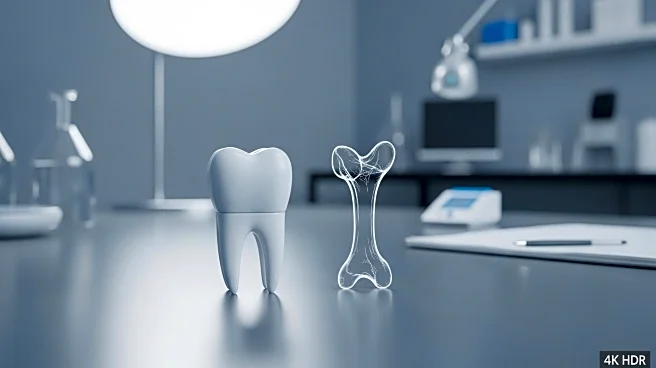What's Happening?
Researchers from the University of Michigan and the Air Force Research Laboratory have developed 3D-printed mechanical metamaterials designed to dampen vibrations through complex geometries. These structures,
known as kagome tubes, utilize precise architectural designs to impede the transmission of vibrations, offering unique mechanical properties without altering chemical composition. The study, published in Physical Review Applied, highlights the potential applications in transportation and civil engineering, where vibration isolation is crucial. The research builds on decades of theoretical work, demonstrating the practical realization of these materials using advanced fabrication technologies.
Why It's Important?
The development of these metamaterials represents a significant advancement in materials science, potentially transforming industries reliant on vibration isolation. By focusing on geometry rather than chemical composition, these materials offer new possibilities for creating robust structures with enhanced performance. This innovation could lead to more efficient designs in sectors such as aerospace, automotive, and construction, where vibration control is essential. The ability to manufacture materials with precise architectural designs opens up new avenues for engineering applications, potentially reducing costs and improving safety standards.
What's Next?
The researchers are optimistic about the future applications of these metamaterials, particularly in vibration isolation. As the technology advances, there may be opportunities to explore other properties and applications, such as soundproofing or impact resistance. The team plans to continue refining the design and manufacturing processes, potentially leading to broader adoption in various industries. Collaboration with industry partners could accelerate the integration of these materials into commercial products, enhancing their practical utility.
Beyond the Headlines
The study also raises questions about the trade-offs between vibration isolation and load-bearing capacity, highlighting the need for further research into optimizing these materials for specific applications. The ethical implications of using advanced materials in safety-critical environments, such as transportation, must be considered, ensuring that new technologies do not compromise existing safety standards.












